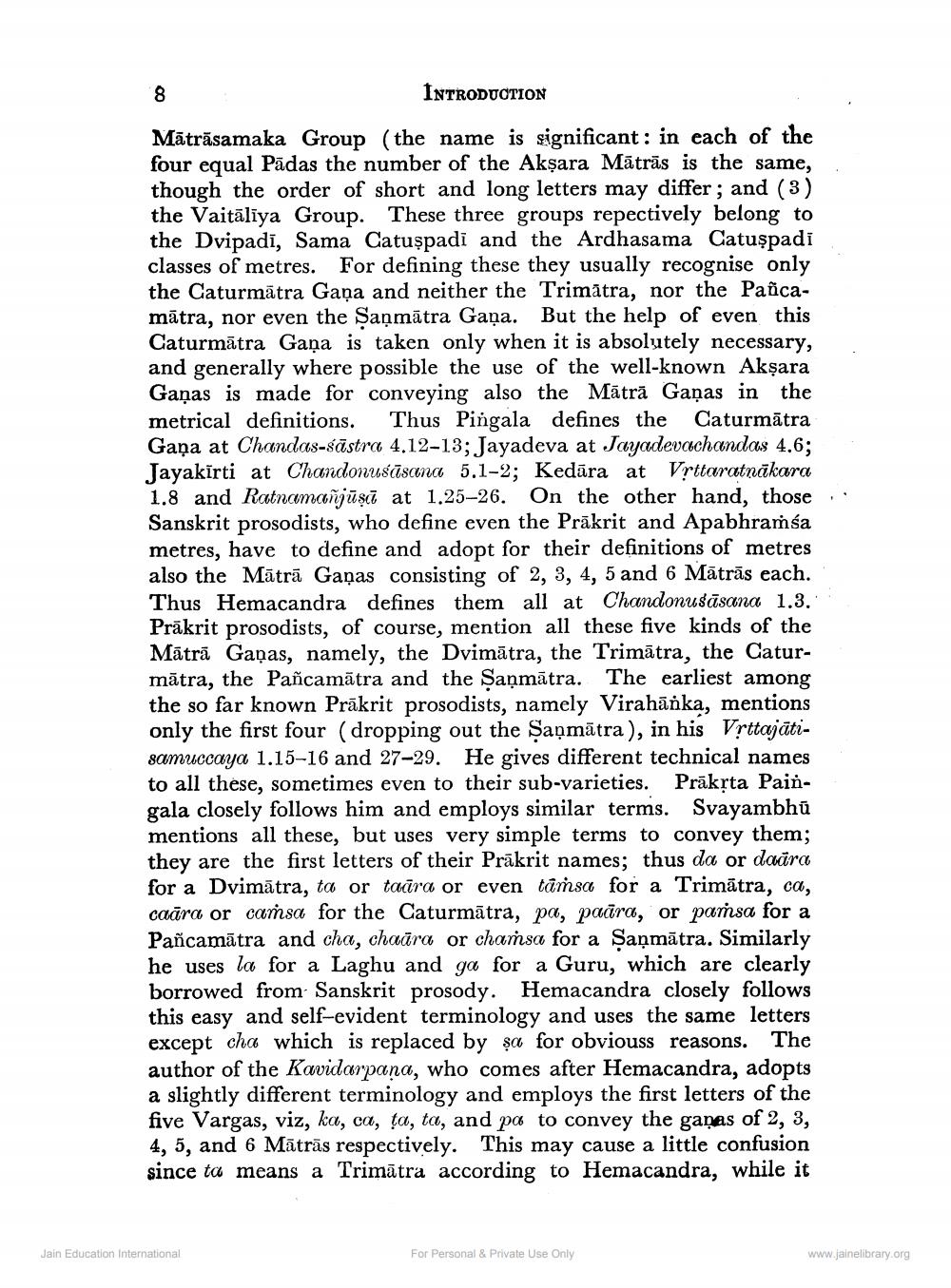________________
INTRODUCTION
Māträsamaka Group (the name is significant: in each of the four equal Pādas the number of the Akşara Mātrās is the same, though the order of short and long letters may differ; and (3) the Vaitālīya Group. These three groups repectively belong to the Dvipadi, Sama Catuşpadi and the Ardhasama Catuşpadi classes of metres. For defining these they usually recognise only the Caturmätra Gana and neither the Trimātra, nor the Pancamātra, nor even the Saņmātra Gaņa. But the help of even this Caturmātra Gana is taken only when it is absolutely necessary, and generally where possible the use of the well-known Akşara Gaņas is made for conveying also the Mātrā Gaņas in the metrical definitions. Thus Pingala defines the Caturmātra Gaņa at Chandas-śāstra 4.12-13; Jayadeva at Jayadevachandas 4.6; Jayakirti at Chandonusāsana 5.1-2; Kedāra at Vịttaratnākara 1.8 and Ratnamañjūstī at 1.25–26. On the other hand, those , Sanskrit prosodists, who define even the Prākrit and Apabhramsa metres, have to define and adopt for their definitions of metres also the Mātrā Gaņas consisting of 2, 3, 4, 5 and 6 Mātrās each. Thus Hemacandra defines them all at Chandonusāsana 1.3. Präkrit prosodists, of course, mention all these five kinds of the Mātrā Gaņas, namely, the Dvimātra, the Trimātra, the Caturmātra, the Pañcamātra and the Saņmātra. The earliest among the so far known Prākrit prosodists, namely Virahānka, mentions only the first four (dropping out the Saņmātra), in his Vrttajātisamuccaya 1.15-16 and 27–29. He gives different technical names to all these, sometimes even to their sub-varieties. Prākṣta Paingala closely follows him and employs similar terms. Svayambhū mentions all these, but uses very simple terms to convey them; they are the first letters of their Prākrit names; thus da or daara for a Dvimātra, ta or taara or even tāṁsa for a Trimātra, ca, caāra or casa for the Caturmātra, pa, paāra, or parsa for a Pañcamātra and cha, chaāra or chaṁsa for a Saņmātra. Similarly he uses la for a Laghu and ga for a Guru, which are clearly borrowed from Sanskrit prosody. Hemacandra closely follows this easy and self-evident terminology and uses the same letters except cha which is replaced by sa for obviouss reasons. The author of the Kavidarpana, who comes after Hemacandra, adopts a slightly different terminology and employs the first letters of the five Vargas, viz, ka, ca, ţa, ta, and po to convey the gaņas of 2, 3, 4, 5, and 6 Mātrās respectively. This may cause a little confusion since ta means a Trimātra according to Hemacandra, while it
a slightly the Kamil is repla termino. Hemac
Jain Education International
For Personal & Private Use Only
www.jainelibrary.org




